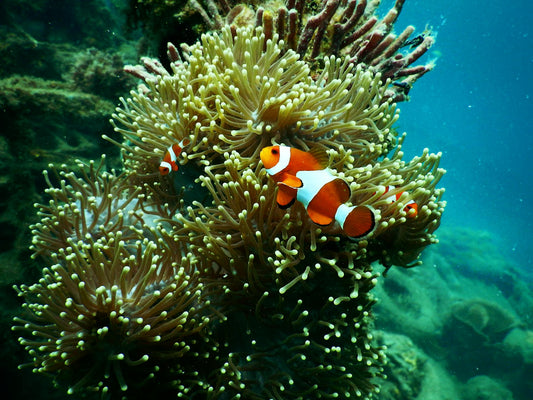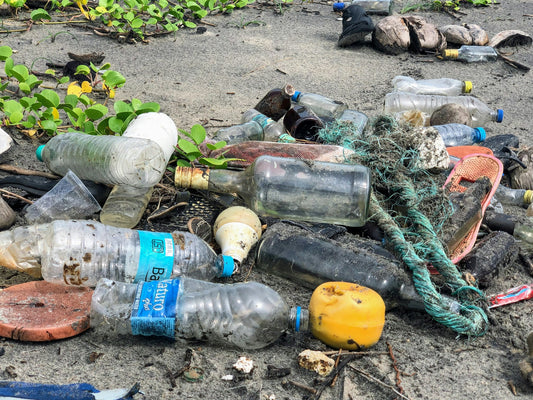Share
A Sneaky Starch Story: The Hidden Side of Bio-Based Plastics:
Ever since we realized the long-term environmental implications of using petroleum-based plastics, scientists have been pushing for alternatives that can break down naturally. Enter the hero of the story - plastics made from plant starch! However, our story takes a twist, as an initial study has shown that starch-based microplastics might not be as benign as we previously thought. Exciting stuff, huh?
The Curious Case of Microplastics:
Those tiny fragments of plastic, smaller than 5 millimeters, also known as microplastics, have been sneaking into our bodies through various sources - water, food, even medical procedures. There's growing concern about the health risks these stealthy particles present, sparking a search for safer alternatives. Starch-based plastics have often been championed as a better choice, since they're made from plants and are biodegradable. But Yongfeng Deng and his team of intrepid explorers decided to delve a tad deeper.
How did the Mice React?:
For three months, the researchers fed groups of mice starch-based microplastics in different quantities. Looking at damages to organ tissues, metabolic disruptions, and changes in the diversity of gut microbiota, the scientists noticed some worrying signs. Liver damage, glucose abnormality, and gut microbiota imbalances were observed, sounding alarm bells that starch-based plastics may not be as safe as accessibly assumed. Deng suggests that even low-dose exposure can potentially cause a range of health issues, particularly perturbing circadian rhythms and disrupting glucose and lipid metabolism.
A Green Hero with a Twist:
As our narrative unfolds, it's clear that further studies will be required to understand how these starch-based biodegradable plastics break down and might interact once inside the human body. While they still offer a benefit over traditional petroleum-based plastics, due to their biodegradable nature, it's vital that we understand the full spectrum of potential health impacts. Even the heroes of the environmental world, it seems, can have complicated stories. Stay tuned for the next chapter!
Ever since we realized the long-term environmental implications of using petroleum-based plastics, scientists have been pushing for alternatives that can break down naturally. Enter the hero of the story - plastics made from plant starch! However, our story takes a twist, as an initial study has shown that starch-based microplastics might not be as benign as we previously thought. Exciting stuff, huh?
The Curious Case of Microplastics:
Those tiny fragments of plastic, smaller than 5 millimeters, also known as microplastics, have been sneaking into our bodies through various sources - water, food, even medical procedures. There's growing concern about the health risks these stealthy particles present, sparking a search for safer alternatives. Starch-based plastics have often been championed as a better choice, since they're made from plants and are biodegradable. But Yongfeng Deng and his team of intrepid explorers decided to delve a tad deeper.
How did the Mice React?:
For three months, the researchers fed groups of mice starch-based microplastics in different quantities. Looking at damages to organ tissues, metabolic disruptions, and changes in the diversity of gut microbiota, the scientists noticed some worrying signs. Liver damage, glucose abnormality, and gut microbiota imbalances were observed, sounding alarm bells that starch-based plastics may not be as safe as accessibly assumed. Deng suggests that even low-dose exposure can potentially cause a range of health issues, particularly perturbing circadian rhythms and disrupting glucose and lipid metabolism.
A Green Hero with a Twist:
As our narrative unfolds, it's clear that further studies will be required to understand how these starch-based biodegradable plastics break down and might interact once inside the human body. While they still offer a benefit over traditional petroleum-based plastics, due to their biodegradable nature, it's vital that we understand the full spectrum of potential health impacts. Even the heroes of the environmental world, it seems, can have complicated stories. Stay tuned for the next chapter!
We hope you enjoyed this article. Please feel free to leave a comment below if you want to engage in the discussion.
If you want to read more like this, make sure to check out our Blog and follow us on Instagram. If you are interested in truly sustainable products, check out our Shop.
Check out the original source here.








